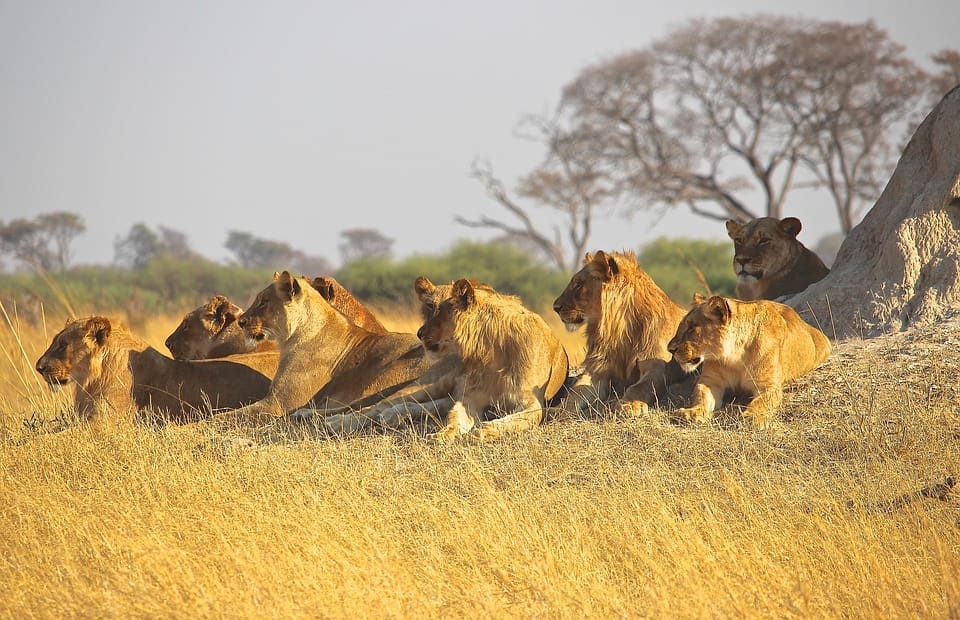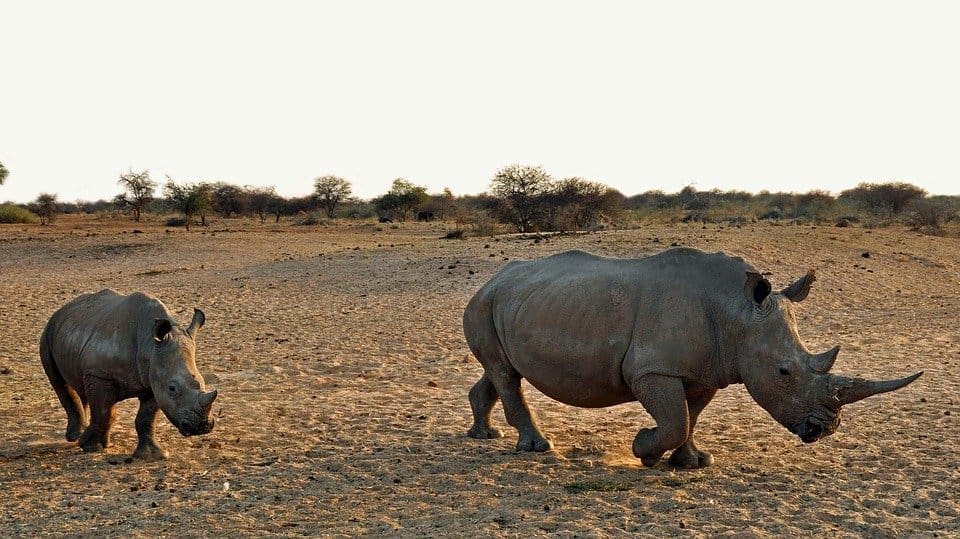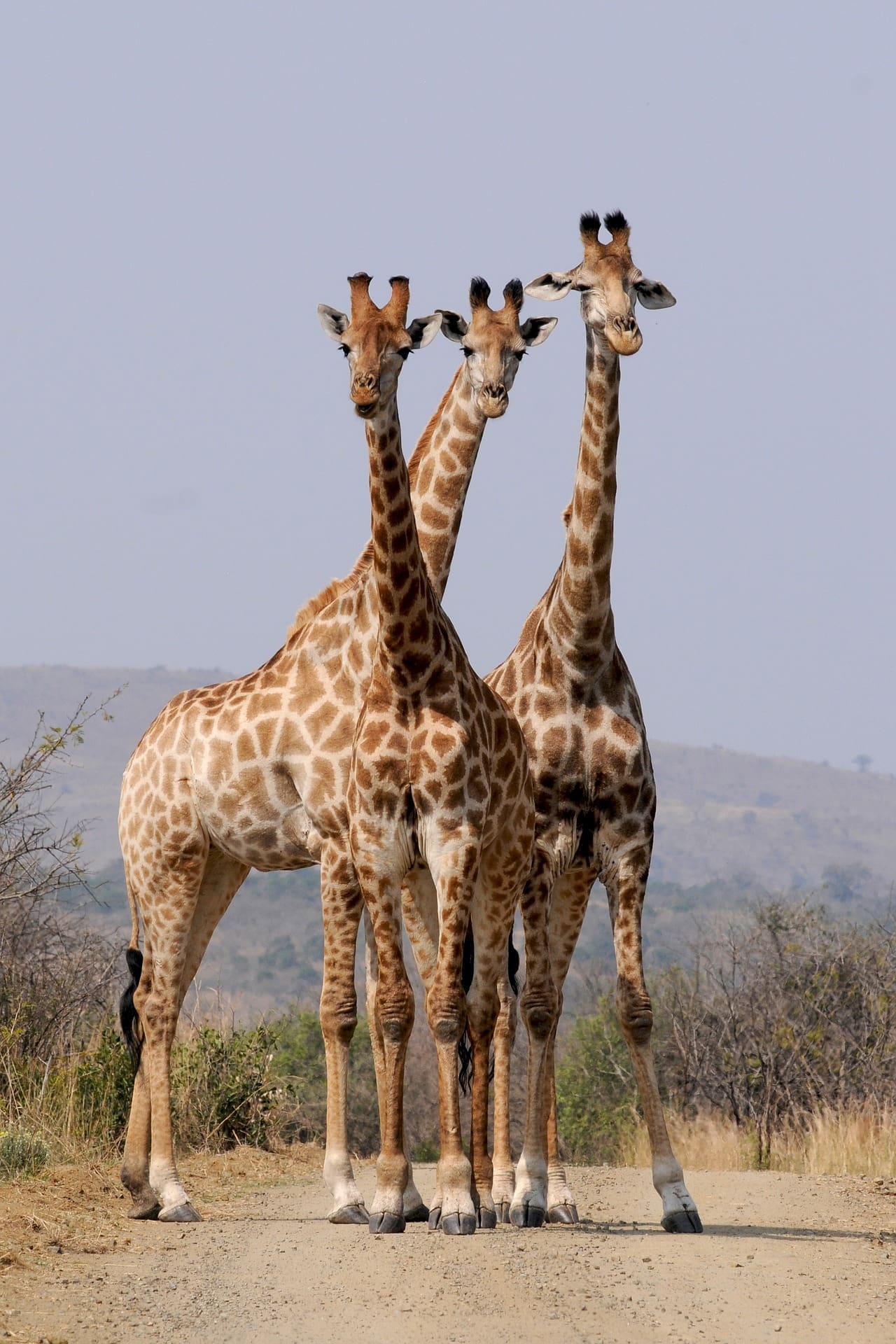The Kruger National Park is arguably the world’s premier wildlife hub and home to some of the today’s most iconic wildlife species. Ranging over a huge portion of South Africa’s northeast, the reserve is a mecca for wildlife enthusiasts. Animals are never far away!
How big is the Kruger National Park?
Kruger spans over more than 2 million hectares, and 2 different provinces in the northeast of South Africa. The park also borders on Mozambique and Zimbabwe and has long functioned as a wildlife migratory route.
How many animals live in Kruger National Park?
Despite the various census’ and wildlife tracking efforts in the park every year, it’s virtually impossible to estimate the exact number of animals living in the Kruger at any one time.
There are various factors that affect a wild animals lifespan. Predation, natural disaster, disease and poaching all have varying impact on the number of deaths per year, while environmental factors and species health can affect yearly breeding patterns.
What is known is that there are currently 148 mammal species living in the reserve alongside 505 bird, 53 fish, 118 reptile and 35 amphibian species.
Though not always the easiest to spot and never a guarantee on any visit, we’ve compiled a list of some of the most iconic animals you could be lucky enough to spot while on safari.
Here are 10 animals to look out for in Kruger National Park:
1. LION
Kruger is home to an estimated 1600 lions. The Lion is the largest cat species in Africa, and a major drawcard for tourists visiting the park.
Male lions can stand at 1.2m (4 foot) tall at the shoulder and tip the scales at over 200kg (450lbs). These impressive cats are characterised by their majestic manes which are highlighted with hues of red, brown and black. Some males boast almost fully black manes, which are thought to be more attractive to females.
Females, or lionesses, are slightly smaller in stature and can weigh around 130kg (290bs). Lionesses do not have any form of mane and are almost always found in groups with other females or with cubs.

Lions are the most social cat species on earth. They are almost always found together in large family groups called a ‘pride’. The average pride of lions in Kruger ranges from around three to thirty individuals. Male lions can often be spotted moving alone or with one or two other males, known as a coalition. These coalitions will either be patrolling their territories to ensure no other lions are encroaching, or on the lookout for a pride to takeover – the exact reason the pride males patrol their territories tirelessly.
Lions are opportunistic hunters, which means they will hunt and eat almost anything and will do so whenever the opportunity arises, even if they’ve just finished off a large kill. Prey mainly consists of large animals like Zebra, Wildebeest, Buffalo and sometimes even Giraffe. Smaller antelope species like Impala and Steenbok are usually only on the menu when the perfect opportunity arises.
Although you might have seen some of the many spectacular lion hunting videos posted on youtube, don’t visit Kruger with such high expectations as most lion sightings consist of the pride sleeping peacefully under and acacia tree for hours on end. Lions are known to sleep for over 20 hours a day!
Kruger’s southern region is known as ‘lion country’ and your best chance of spotting these iconic carnivores will be somewhere along the stretch between Lower Sabi and Satara.
2. LEOPARD
The African leopard is the most elusive of all the big cats and therefore one of the most sought-after sightings in Kruger. Leopards are solitary cats, which are never seen in groups unless you’re lucky enough to spot a mother and her cubs or a mating pair.

The leopard’s mesmerising pattern is made up of black spots arranged in rosettes, contrasted on a golden-yellow background. They are large and stocky built cats with bodies designed for immense power, which allows them to pull prey, heavier than themselves, several metres up a tree to avoid being robbed by other predators and scavengers.
These big cats feed on a wide variety of prey items such as wildebeest, birds, baboons and even fish, but most of their diet comes in the form of impala.
The luscious vegetation found in the southern part of the Kruger National Park, provides excellent habit for leopards and this is where these shy predators are seen most often, along with the more mountainous and tree-covered northern parts near Letaba and Shingwedzi.
3. ELEPHANT
The African elephant is the world’s largest land mammals and one of the most important species to the African ecosystem. Bulls can reach a height of 3.3m (11 foot) at the shoulder and can weight up to 6 tonnes.
Elephants live in large family groups called herds. These were once thought to be led by old bull elephants however this has been proven to be untrue. Elephant herds are always led by an old female known as the matriarch. Sexually mature males visit these groups in search of females in oestrus.

Elephant herds can often be spotted around a water source. Kruger’s large dams and rivers make for some incredible elephant sightings. Apart from drinking massive quantities of water, elephants also enjoy mud baths and even swimming. Mud is a great form of protection from the harsh African sun and also a great way for elephants to prevent parasites from picking on their skin.
Lone bull elephants should be approached with extreme respect and caution as they can often be very temperamental and a car of any size is no match for an annoyed elephant.
4. RHINO
Kruger National Park is home to two species of African Rhino – the white rhino and the black rhino. Both of which are extremely endangered, but also quite easy to spot on a safari in Kruger. You’d be pretty unlucky to not find a rhino after a couple hours in the park!
Contrary to their names, their is no colour difference between the two species. The main difference is in the shape of their lips. The black rhino sports a hooked lip, which makes it easier to pick leaves off trees and bushes, also known as ‘browsing’. The white rhino boasts a square, flat lip which is used for ‘grazing’ or feeding on grasses and roots in the ground.

As with most herbivores, rhinos spend most of their lives feeding and so the best places to spot each species of rhino would be areas where there is an abundance of what they eat. White rhinos are most often spotted out in open grasslands, while black rhinos are usually seen feeding on shrubbery in dense tickets.
White rhinos are also significantly larger than black rhinos and this, as is so often the case in the animal kingdom, means black rhinos are considerably more aggressive. In the bush, being larger means less predators to worry about, and bold white rhinos have even been spotted feeding right next to lions, completed unfazed.
5. BUFFALO
The Cape Buffalo is potentially the most dangerous of all animals in the Kruger National Park. Not because it has an arsenal stronger than any of the animals mentioned above, but because of their incredible unpredictability and notorious bad-temper.
Both male and female buffaloes have horns, with the only notable difference being the thick ‘helmet’ which males develop over the top of their heads. This is called the ‘boss’ and provides extra protection and reinforcement for males when engaging in vicious fights for dominance.

Lions and buffaloes are eternal enemies and many magnificent scenes have played out between the two sets of animals in the Kruger Park. When a pride of lions sets its sights on a buffalo herd, they aim to pick out and isolate one of the weaker members. Buffalos don’t go down without a fight and the herd won’t ever give up on one of their own. The herd will rush to the scene and fight off the lions using their hooves and horns. In some instances even killing an unlucky lion.
Buffalo are one of the easiest animals to spot in the park thanks to their widespread distribution and they fact that herds can often be made up of hundreds. They frequent the woodland savannahs and are never too far from water.
6. CHEETAH
The smallest of Africa’s big cats, the slender and long-legged cheetah is the fastest land mammal on earth. These speedy felines can reach top speeds of almost 120km/h at full sprint. The cheetah is characterised by its golden coat filled with small solid spots, different to the rosettes found on leopards.
Generally cheetahs live solitary lives, but can often times be found in small family groups. Usually either a mother and her cubs or a group of brothers. They spend most of their time frequenting savannah woodland areas and open grasslands, which is where there preferred prey species also live and feed. The ideal prey for cheetah are smaller antelope like duiker and springbok, but on occasion family groups will also bring down a larger animal such as a wildebeest.
Cheetah sightings are rare, as they tend to remain scarce in hopes of avoiding any conflict with bigger cats species like lions or leopards. Popular areas for cheetah sightings are also in the south of the park, with the stretch between Crocodile Bridge and Skukuza being a definite hotspot.
7. SPOTTED HYENA
The infamous spotted hyena are a staple and popular sighting in the Kruger Park. Perhaps the continent’s most well-known scavengers, it is little known that hyena’s are also prolific hunters in their own right. Its sloping stature and mischievous demeanour, together with its eerie ‘laugh’ have earned the spotted hyena a bad reputation.
Spotted hyenas are a dull brown color, with patterned dark spots which give them their name and also help with camouflage in the long grass of savannah woodland areas. They are large and heavy-bodied animals with extremely strong bite force that allows them to chew and digest bones. This means they can extract nutrients from carcasses that other predators have already abandoned. Traces of white can typically be found in hyena faeces which is evidence of the calcium in the digested bones.
Hyenas will always scavenge by choice, and when the opportunity arises, strong family groups – known as clans – are even know to chase a pride of lions of a kill. However contrary to popular belief, hyenas are also very successful hunters and often prey on various species such as springbok, wildebeest and zebra.
Hyena clans are led by females, which are larger and more aggressive than males. The social structure is built around the dominant female and the clan’s den site which is used to house young cubs and juveniles. If you’re lucky enough to stumble upon the den site, you might even be able to see a couple youngsters.
The savannah regions around Skukuza are a great place to spot clans of spotted hyena.
8. WILD DOG
African wild dogs, or painted wolves, are a rare and treasured sighting in the Kruger National Park. The energetic and exciting dogs are Africa’s largest canid species and possibly it’s most successful hunters.
They boast unique patterning across the entirety of their bodies, with beautiful shades of brown, white, black and tan that resembles a painted canvas – which gives rise to the name “painted wolf”. They are a modestly sized predator, roughly the same size as a Labrador, with little difference between the sexes. Their lean build allows them be relatively light weight, which helps maintain high speeds over long distances.
Wild dogs cover massive distances every day and are known to run their prey down to exhaustion. They live in large family packs and take down prey with awe-inspiring precision and cohesion.
They often make there homes in areas of moderately dense bush and open grasslands. In Kruger, wild dogs are often spotted near Phalaborwa gate and Skukuza, with Tshokwana and Afsaal also being popular for sightings.
9. HIPPO
A staple of Africa’s water ways, the unassuming and amusing hippo is a firm favourite among safari goers. But don’t be fooled by its demeanour the hippo is revered as the most dangerous mammal on the continent, thanks to the fact that its responsible for more human fatalities than any other animal.
Hippos are massive, bulky animals whose size is often not truly appreciated as they hide most of their body underwater all day. They can weigh up to 2,500kg (5,500lbs) and sport a set of powerful jaws that can open to almost 180 degrees.
Hippos are one of the most widespread animals in Kruger Park and can be spotted in pretty much every body of water on the reserve. They spend their days bobbing in the shallows in their family pods, and venture out at night to graze under the cover of darkness.
10. GIRAFFE
The roaming skyscrapers of the bush, the giraffe is the tallest animal in the world and one of the most frequently seen animals in the Kruger National Park. They can reach a height of up to 6 metres (19 foot) with their neck alone stretching over 2 metres.
Aided by the reach of their long necks, giraffes are able to feed on treetop foliage that is not accessible to other herbivores. They also wield a long prehensile tongue that is used to pull off pods and leaves which are then stripped from the stems with their incisor teeth.
Fairly social animals, giraffes get together in small herds from time to time. However, no group bonding is evident. Youngsters stay with a few adult females and the males are generally on the move between groups, in search of receptive females.
Giraffe are most often found feeding on acacia trees in a woodland region of Kruger, never far from a water source. As with other large mammals like elephants and rhinos, giraffes need to consume large amounts of water everyday.





